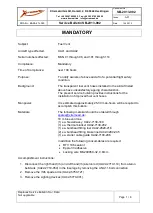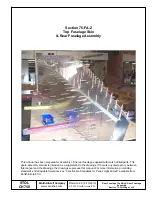
“ KOMPRESS ” OWNER’S MANUAL REL . 2.2
___________________________________________________________________________
©
Copyright by
FLY
Products
s.r.l.
Page
22
Tank air ventilation open and sufficient fuel level
Strap In, Hook Up
Buckles secure
Chest strap tight
Harness adjusted properly
Reserve parachute attachment
Reserve parachute deployment pin
Reserve parachute handle in sight - Deploy in 3 sec., rehearse procedure
Risers hooked up correctly
Carabiners locked
Nothing loose to get in prop
Radio for volume, clearness
Helmet on, tight, fastened
Tuck in hood on hooded sweatshirt
Flights under special conditions
Even though you must know these information learned in your license-flight , we want remember you
some important flight information:
RAIN:
In principle no flights under rainy conditions should become necessary. Anyway, every pilot may get
into unforeseeable worse weather conditions. And so if the rain is only very light, the flight may be
continued for a certain time, but the wet canopy will get heavier. Therefore flight speed will increase,
causing a higher stall speed as well.
With a wet wing fly carefully, avoid sudden manoeuvres and don't be excessively slow when landing.
If the rain gets stronger land!
No flights in strong rain
!
WIND:
If under strong wind conditions land immediately and once touch down turn quickly to control the
wing with the “B” elevators avoiding to be dragged away.
FLIGHTS IN SNOWY CONDITIONS:
They are not permitted at all. In case it starts to snow during flight land soon as possible!
EXTREME TEMPERATURES:
Remember that flight parameters changes in different temperature levels.
At high temperatures the required power and the required flight speed increases, so that the take off
distance gets longer than in winter. This is similar to flights in high altitudes.











































